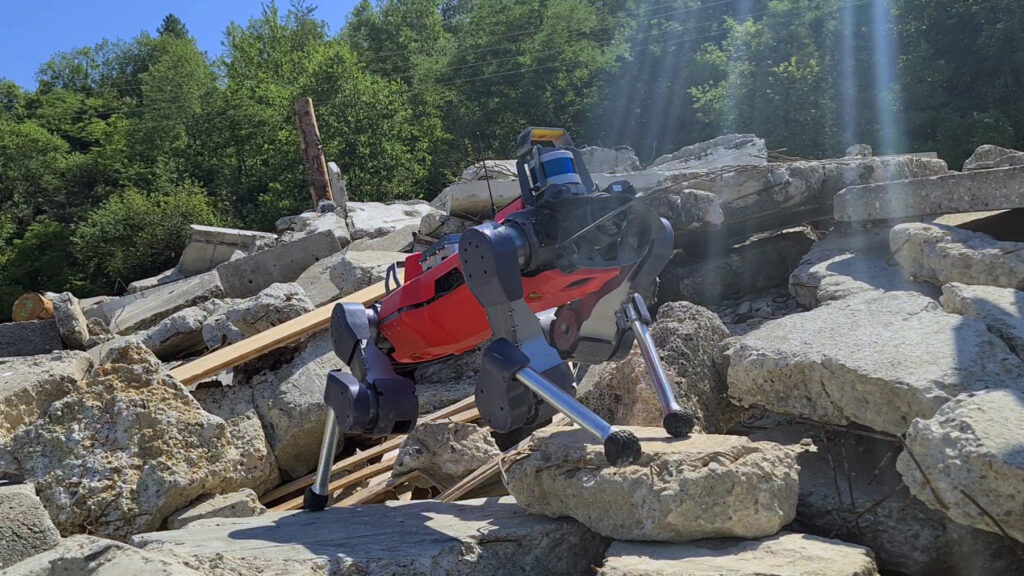In an exciting leap forward for robotics, ETH Zurich’s quadrupedal robot, ANYmal, has recently mastered the art of parkour and can now traverse across rugged terrains with remarkable agility. This development is a result of cutting-edge machine learning techniques and innovative engineering, broadening the horizons for robots in urban environments, disaster sites, and construction areas.

ANYmal, initially adept at navigating the rocky landscapes of Swiss hiking trails, has been given a significant upgrade by researchers at ETH Zurich, who have equipped it with the skills to smoothly navigate obstacles typically found in urban settings and challenging terrains such as those in disaster zones. This quadrupedal robot, with its newfound parkour prowess, showcases a significant advancement in robotic mobility and adaptability.
The robot’s evolution was spearheaded by two teams under the guidance of Professor Marco Hutter at ETH Zurich’s Department of Mechanical and Process Engineering. Nikita Rudin, an ETH doctoral student and parkour enthusiast, played a crucial role in extending ANYmal’s capabilities. Contrary to the belief that legged robots had reached their developmental peak, Rudin and his team have pushed the boundaries further through machine learning, enabling ANYmal to perform complex maneuvers like scaling obstacles and dynamically jumping down from them.
This learning process involved a method akin to how a child learns: through trial and error. ANYmal, equipped with cameras and artificial neural networks, analyzes and identifies obstacles, strategizing movements based on its extensive training. While Rudin acknowledges the substantial progress, he also notes the potential for further advancements, particularly in enabling the robot to autonomously navigate highly irregular terrains, such as rubble-filled disaster sites.
Complementing Rudin’s work, fellow ETH doctoral student Fabian Jenelten focused on preparing ANYmal for real-world applications in hazardous environments. By combining traditional model-based control techniques with machine learning, Jenelten has significantly enhanced ANYmal’s maneuverability and adaptability. This hybrid approach allows ANYmal to accurately navigate complex terrains, ensuring stability on slippery or uneven surfaces.
ANYmal’s success in mastering both planned and unpredictable elements of movement is a testament to the collaborative effort between the two teams. Their work has not only expanded the robot’s repertoire of skills but also improved its ability to operate in environments that are too risky for humans, such as disaster-stricken areas or construction sites.
This breakthrough is not just a step forward for ANYmal but also a leap in the field of robotics, demonstrating the vast potential of combining machine learning with traditional engineering techniques. As ANYmal prepares to venture into real-world applications, it stands as a beacon of innovation, ready to tackle challenges in disaster response, construction monitoring, and beyond, making the future of robotic assistance in human environments more promising than ever.
Source: Paper
Like this article? Keep up to date with AI news, apps, tools and get tips and tricks on how to improve with AI. Sign up to our Free AI Newsletter
Also, come check out our free AI training portal and community of business owners, entrepreneurs, executives and creators. Level up your business with AI ! New courses added weekly.
You can also follow us on X